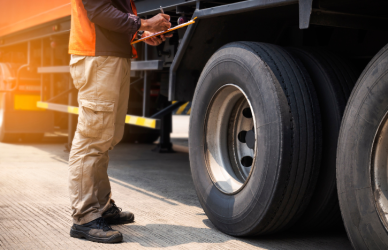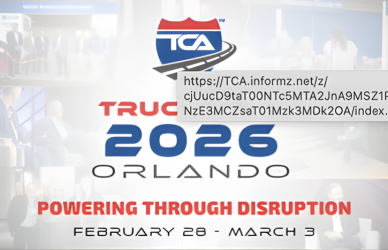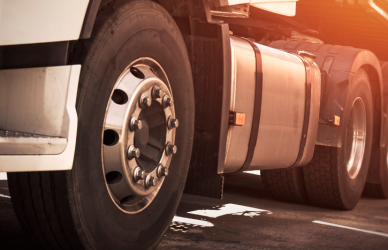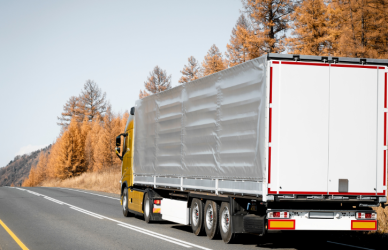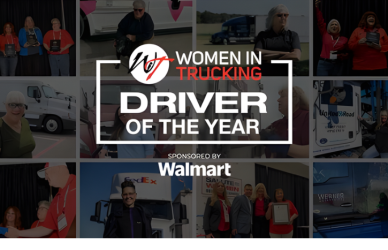Arizona has a long-standing reputation of excellence in the aerospace and defense industries, but now it’s making waves as an up-and-coming destination for electric vehicle technology. This is evidenced by recent investments from LG Energy Solution and Taiwan Semiconductor Manufacturing Co., whose $5.5 billion battery manufacturing facility near Phoenix and $40 billion chip production plant will bring new jobs to the Grand Canyon State.
“We always had a technology-rich workforce, a lot of engineers are here because of Raytheon, Honeywell, General Dynamics, Northrop Grumman, Lockheed Martin,” Steve Zylstra, CEO of the Arizona Technology Council, said in an interview with FreightWaves. “But the preponderance of the growth here in the tech manufacturing sector has been in the last five to 10 years.”
The Arizona Technology Council is bridging the gap between local science and technology companies, providing a platform for networking and growth opportunities in the industry statewide.
Zylstra speaks on the benefits to companies including available land, a large pool of educated labor, a favorable business climate, and a prime location which includes a shared border with Mexico where a nearshoring boom has been happening recently.
“We have a very light regulatory environment here, the best research and development tax credit in the U.S., also a lot of available land, which a lot of places don’t have,” Zylstra said. “We have five electric vehicle manufacturers here, four battery manufacturers here and two lithium-ion battery recycling firms here. Another benefit that we have is that we’re adjacent to Mexico, and Mexico has a lot of the automotive industry there, the supply chain is close.”
John Boyd, principal of the longstanding Princeton-based company The Boyd Co. Inc., has reported that both U.S. and Mexican regions are experiencing a remarkable spike in overseas production being sent back to domestic shores due to changes in supply chain maneuvers – illustrating the power of nearshoring strategies for businesses around North America today.
“Nearshoring is a major focus today for advanced manufacturers, and when we tend to look at advanced manufacturing site selection projects, whether it be for battery production, or semiconductors, we look for corridors,” Boyd is reported telling FreightWaves.
Central Texas has become an attractive hub for major automotive manufacturers, with the CANAMEX Corridor connecting Mexico to Canada stretching across its region. According to Boyd, Tesla and Navistar are among these appealing companies that have been drawn in by this lucrative opportunity.
“We think about the State Highway 130 corridor [in Texas], which has emerged as a premier place for advanced manufacturing and brought in companies like Navistar, Samsung, Apple and Tesla’s gigafactory in Austin,” Boyd said. “Look at the proximity to Monterrey, Mexico, which has really become a global hub for advanced manufacturing in the country.”
According to Boyd, the drive from Monterrey to Central Texas is about 7 hours.
“Those markets approximate nearshoring opportunities in the U.S. that translate into real economic development opportunities by way of the supplier activity,” Boyd said. “One of the silver linings, if you will, with the pandemic was it really put a spotlight on the risks and hidden costs associated with supply chain outsourcing to remote parts of the globe.”
CEOs across the country are embracing reshoring, as seen in a sharp jump from 78% to an impressive 96%, according to the 10th annual Kearney Reshoring Index released April 13. This surge indicates that businesses increasingly recognize and prioritize domestic production over offshoring for their operations.
In a recent report by the Kearney Reshoring Index, CEOs are seeking to diversify their supply chains through reshoring or nearshoring manufacturing away from China and into other Asian countries or North America. According to lead author Patrick Van den Bossche, this is partly in response to current global events as firms look for alternatives that will be beneficial for them long-term.
“What is driving it is still very much the fact that you can’t just put your eggs in one basket, and you have to either go to another one of those other Asian countries, or come back to the U.S. or Mexico, and maybe in some cases a combination of those,” Van den Bossche stated.
According to the Kearney Reshoring Index, the electric vehicle and semiconductor industries have been a driving force behind the reshoring of operations. Emerging technologies are revitalizing domestic production opportunities for US firms.
“EV batteries, EV cars, that part of the automotive industry is really being pulled back into the states by government policies, incentives, like the Inflation Reduction Act, for instance,” said Van den Bossche.
Arizona pulled out all the stops to lure two high-profile tech companies, TSMC and LG Energy Solution, resulting in a huge win for the area. Executives from both firms were reportedly impressed with local incentives as well as investment opportunities competing states couldn’t match – making 2021 an exciting year of growth for Phoenix’s technology sector.
“Texas is our primary competitor these days. They have some of the same attributes as Arizona,” Zylstra said. “Texas has the benefit of not having any corporate income tax and that’s because of oil and gas. Nevada has the same thing, and that’s because of gambling.”
From the wheat fields of Kansas to the rolling hills of Tennessee, states across America have seen a boom in electric vehicle (EV), semiconductor and battery production over the last year. Auto industry giants from New York to Michigan are investing heavily in these projects as they strive for cleaner energy solutions.
Zylstra noted that he’s been seeing an “incredible number of companies that are moving to Arizona from California.”
“These companies are trying to exit the other end of the spectrum, over 8% in corporate tax rates, unbelievable regulatory burdens on companies, the high cost of real estate, the high cost of doing business. They’re all trying to escape that and they’re generally coming to Arizona and Texas,” Zylstra said. “I think the other two states where we get the most companies from are Washington state and Illinois.”
In a highly competitive race, states are striving to win over megafactories that can create huge economic growth and employment opportunities. Boyd comments on the intensity of this competition as regions fight for what could be life-changing investments.
“I use the term ‘second war between the states’ for projects, and it’s very, very competitive,” Boyd said. “A big part of Texas’ winning formula is its sheer size, its clout in Washington. Texas is also linked to the global marketplace via deepwater ports, intermodal rail. So those are some inherent advantages that Texas enjoys.”
According to Van den Bossche, states offering favorable business regulations and freedom from compulsory labor union dues are increasingly becoming the chosen locations for major electric vehicle (EV), battery, and semiconductor factories.
“If you look across the board where investments are happening, I would say the only common denominator I could sort of see is that it’s mostly right-to-work states, not exclusively, but that’s clearly a driver,” Van den Bossche said. “The other thing is Southern states seem to have some preference, especially in cases where companies are trying to not just put manufacturing here, but then reestablish their supply base and try and get suppliers from Mexico, instead of from China, because otherwise, if you keep your supply base still in China, you’re still operating a very, very long supply chain.”
Source: FreightWaves



